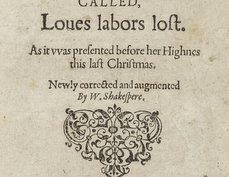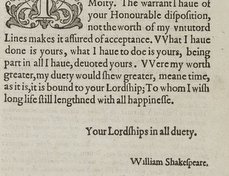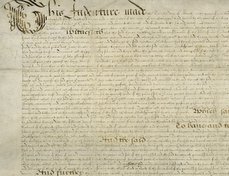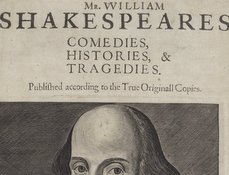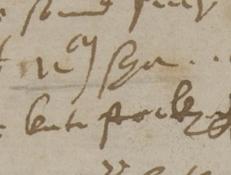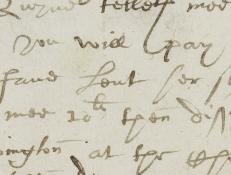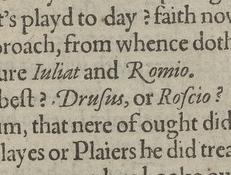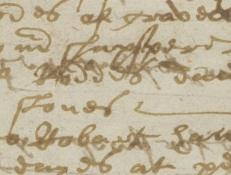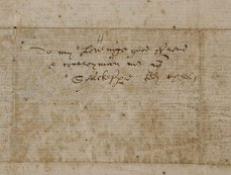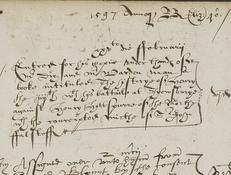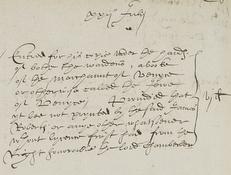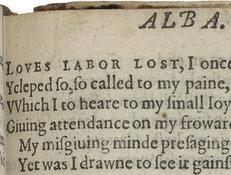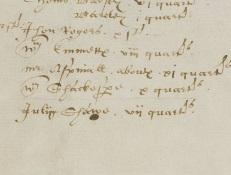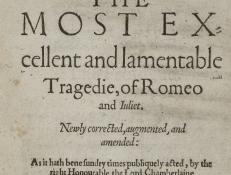Shakespeare Documented is still growing! Currently, two thirds of the descriptions and 98% of the images are available in the resource. Descriptive text will continue to be added, updated and expanded. Visit our About page to learn more about the project scope.
EXPLORE THE DOCUMENTS BY CATEGORY
SHAKESPEARE DOCUMENTED IS STILL GROWING
Descriptive content and transcriptions will continue to be added, updated and expanded. Check back for regular updates!
Filter the documents by tag(s)
ca. November 4, 1598
While in London in the autumn of 1598, Richard Quiney received five letters from his father Adrian. Four are dated (October 20 and 29, November 10 and 18).
November 24, 1598
While in London during the autumn of 1598, Richard Quiney received at least four letters from Daniel Baker, written on October 17, October 26, November 13 and November 24, the last of which is shown here. Baker addresses Quiney as his uncle, and refers to Quiney’s wife as his aunt.
1598
SHAKESPEARE DOCUMENTED IS STILL GROWING! Descriptive content and transcriptions will continue to be added, updated and expanded. Check back for regular updates!
1598
The borough chamberlain, in his accounts submitted in January 1598, included an entry that at some point in the previous twelve months he paid “Mr Shaxpere” 10 pence for “on lod of ston,” one of a set of five payments made towards the repair of the bridge over t
October 25, 1598
This is the only known surviving letter written to Shakespeare, but he may never have received it. (No known letters survive written by him.) It is addressed “To my Loveinge good ffrend & contreymann Mr.
February 25, 1598
Henry IV Part 1 was entered into Liber C of the Stationers' Company on February 25, 1598, under the title "The historye of Henry the iiijth with his battaile of Shrewsburye against Henry Hottspurre of the Northe with the conceipted mirthe of Sir John Ffalstoff." Andrew Wise
July 22, 1598
The Merchant of Venice was entered into Liber C of the Stationers' Company on July 22, 1598, under "the title the Marchaunt of Venyce or otherwise called the Jewe of Venyce." James Roberts, the London printer and publisher who entered the title, was allowed to enter the pla
1598
The first description of a performance of Love’s Labor’s Lost appears in a sonnet sequence by Robert Tofte printed in 1598, the same year the play was first published.
February 4, 1598
In this 1598 survey of those storing grain in Stratford-upon-Avon, “W[illia]m Shackesp[ear]e” is listed as holding 10 quarters of malt.
1599
Customers browsing in the bookshops of London in 1599 would have found a new version of a popular play based on the well-known story of Romeo and Juliet.

